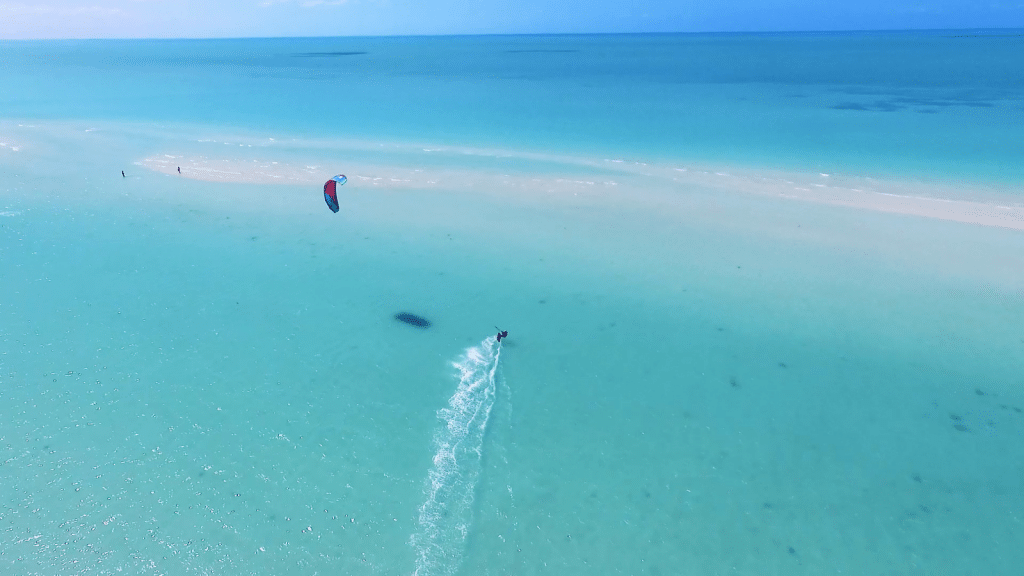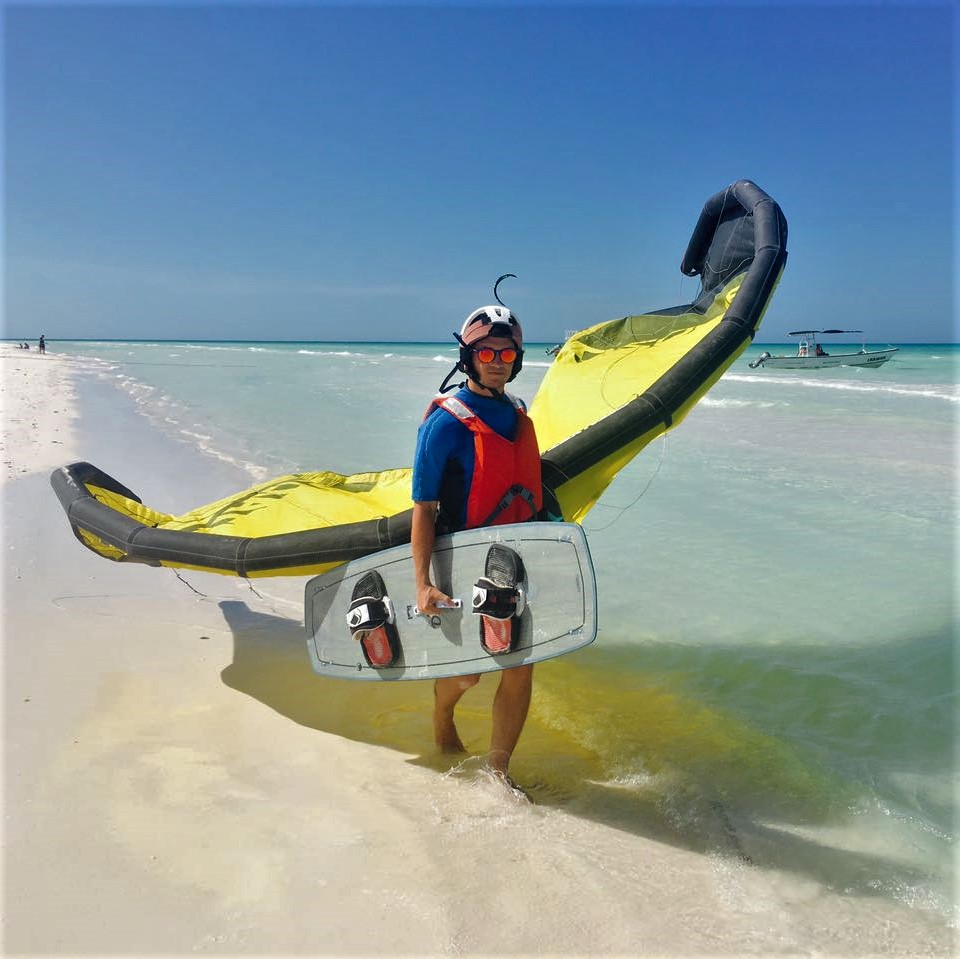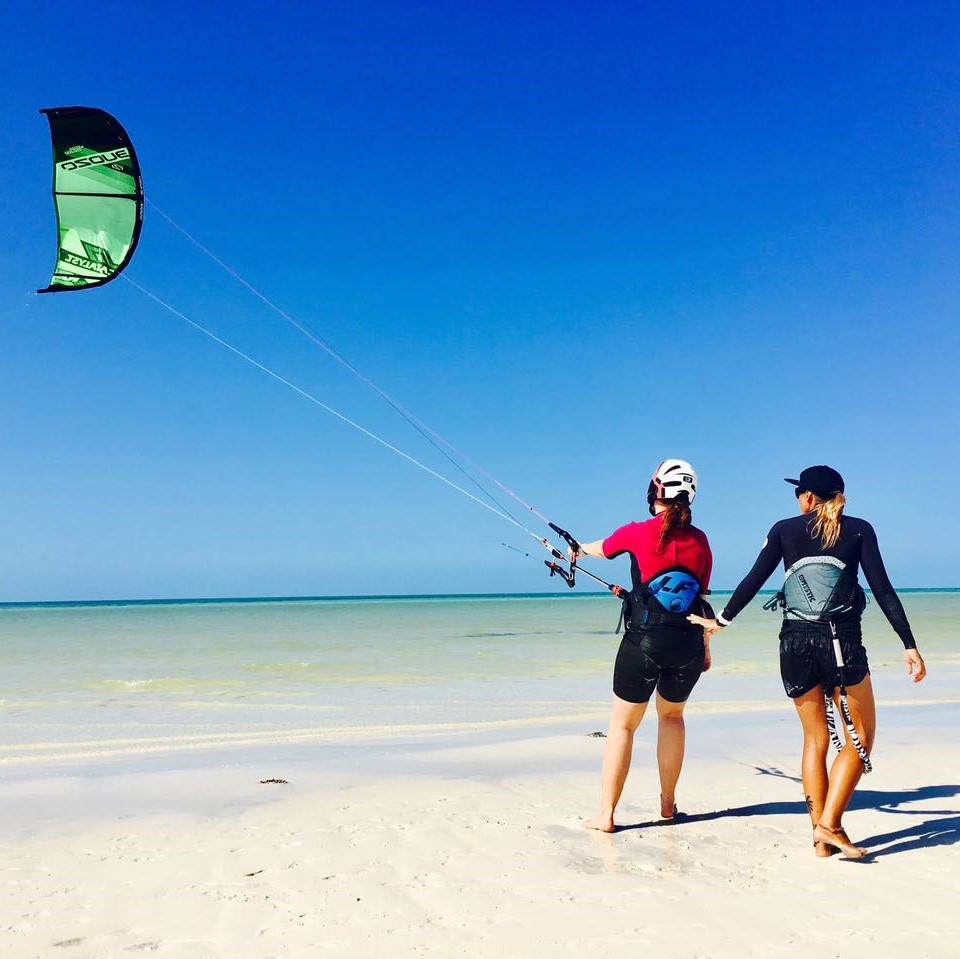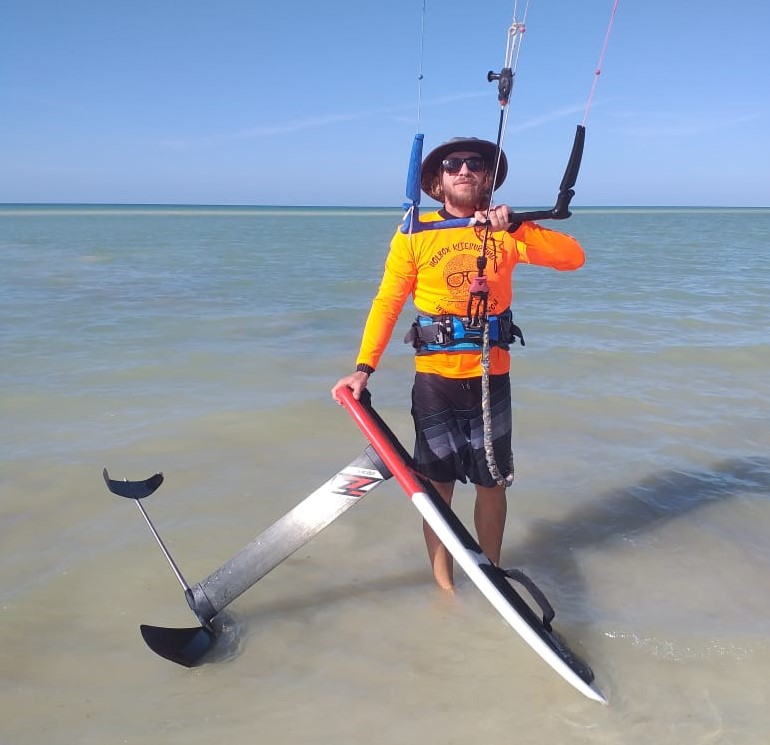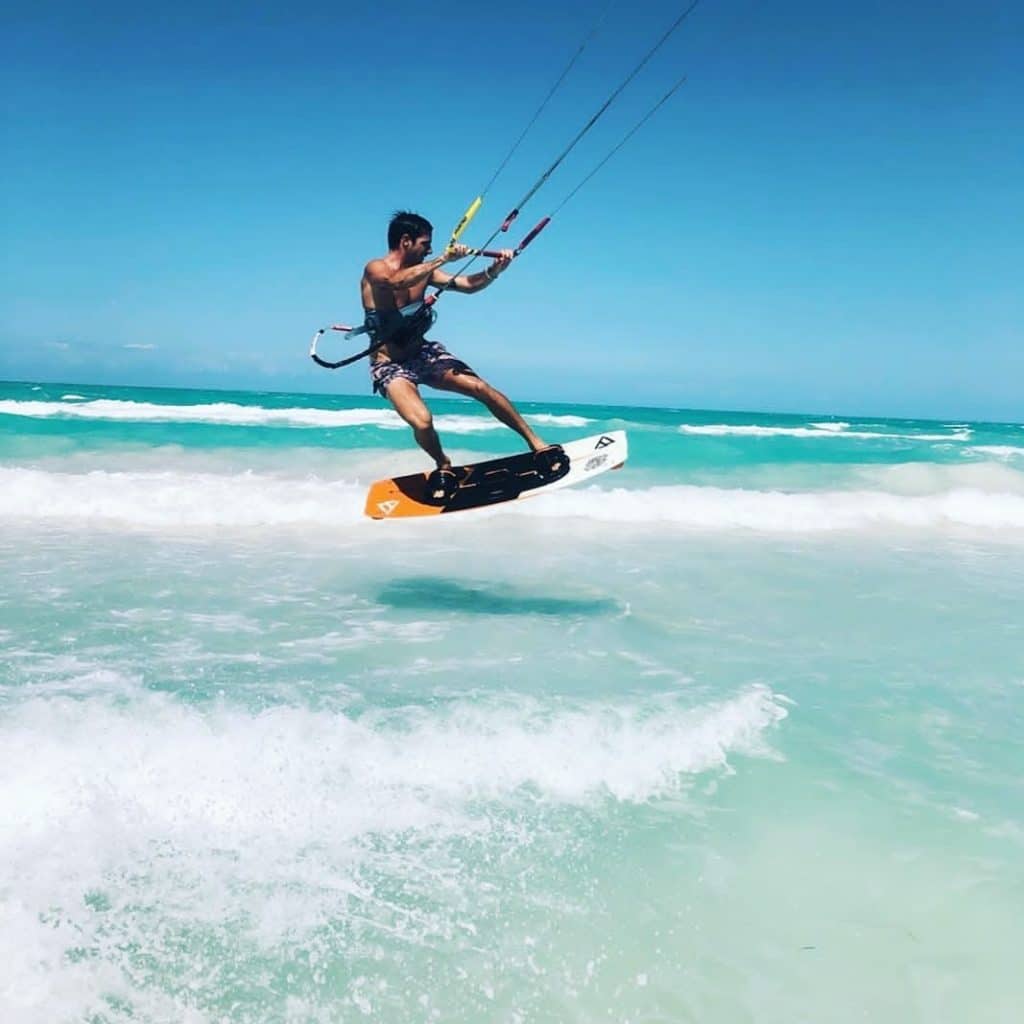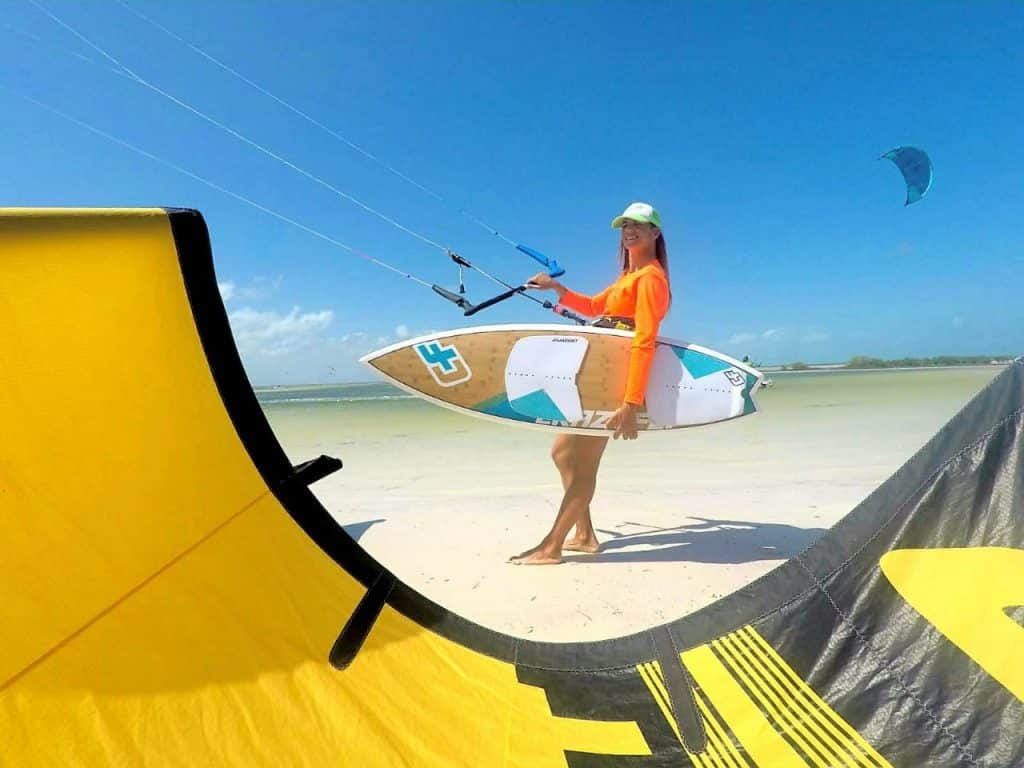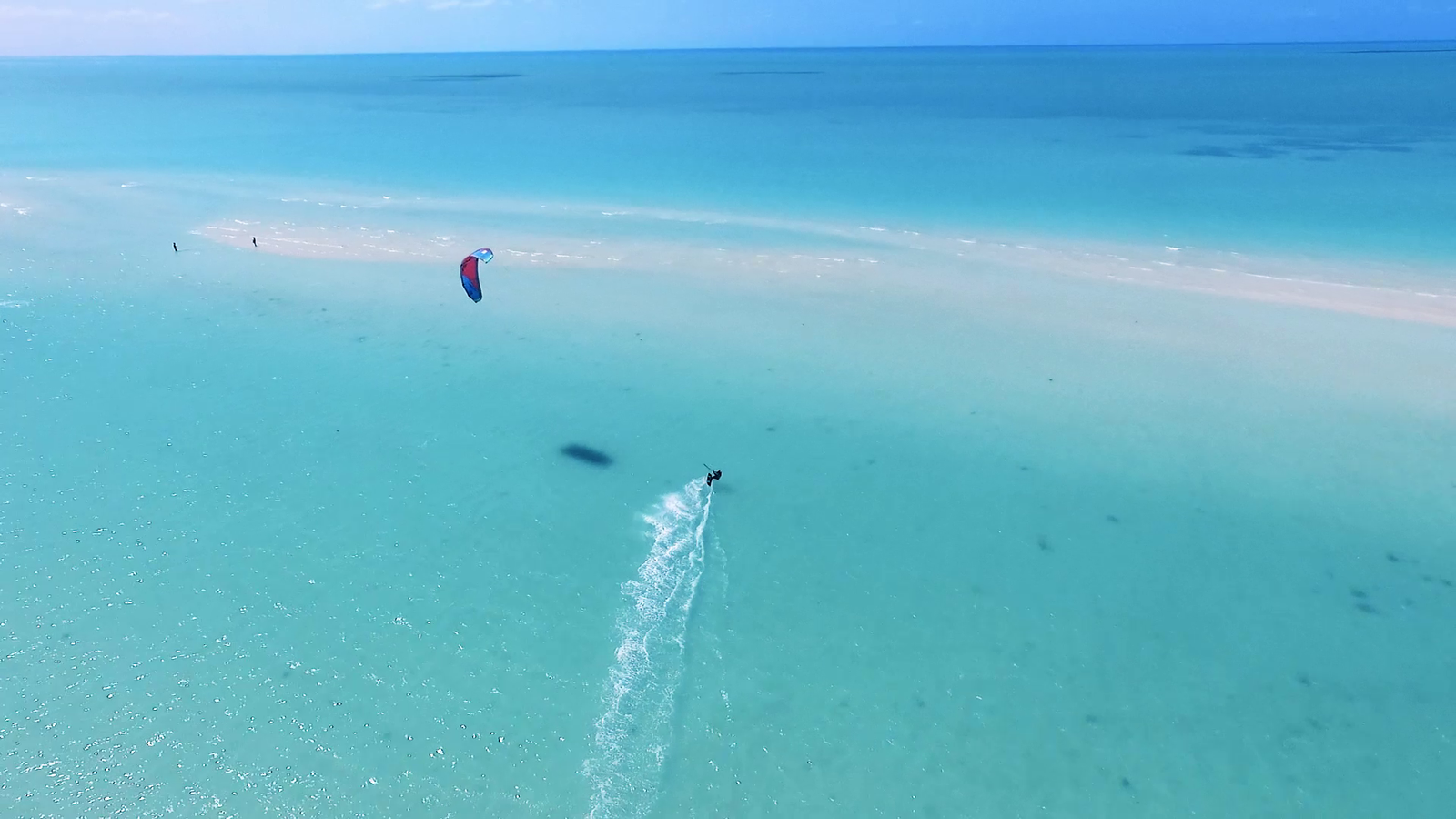Overview of Wind & Seasons
(and El Norte Phenomenon)
- Peak season runs from November through July (or even August) with the most consistent winds.
- These “Norte” cold-front winds hit hard—up to 25–30 knots—and typically arrive once every one or two weeks, especially between November and February, easing to 15–20 knots after the front passes.
- From February onward, nortes become less frequent; easterly winds become the norm, often boosted by afternoon thermals thanks to the island’s relation to Cabo Catoche.
- Wind directions vary—common directions include N, NE, E, SE, and even W—offering flexibility for different spots and skill levels.

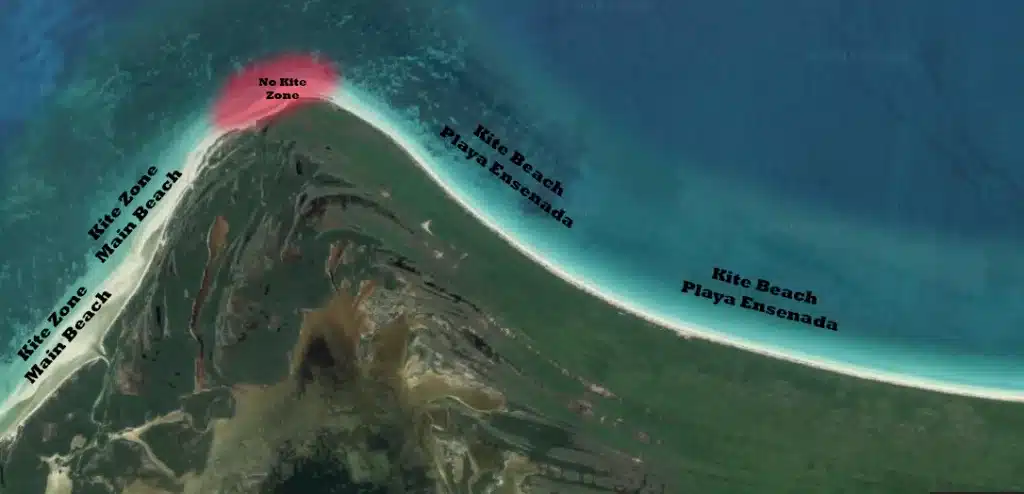
The ‘Norte’ Phenomenon
- Nortes are powerful cold-front systems bringing strong northerly gusts (25–30 knots), ideal for advanced riders seeking more adrenaline.
- Tip: Bring a shorty wetsuit for comfort during these chillier water days.
Kite Spots in Holbox
Playa Las Nubes (aka Kite Beach, near Hotel Las Nubes)
- Best for N to NE winds, especially when shallow and flat water is desired. Ideal for both beginners and advanced riders.
- Features include: flat lagoon, sandbar ~100 m offshore, and transition from butter-flat to small chop—great for foilboarding.
- Access: walk, bike, golf-cart taxi. Launching/landing best done inside the lagoon.
- Hazards: shifting sand, roots, and hidden stones, plus occasional boat traffic.
Punta Mosquito (boat ride-only)
- Best with E to SE winds, commonly found March–July. Suitable for all levels, especially advanced and foil riders.
- Conditions: small chop, deeper water beyond ~50 m (depending on tide).
- Access: boat-only, typically via organized group trips—you’ll want to sign up early.
- Environmental considerations: located within a turtle nesting zone and protected bird habitat. Be respectful, ride upwind of the point, and avoid the current near the tip.
- Hazards: anchor lines, boat traffic in both directions—maintain awareness when launching/landing.
Safety & Local Context
- Holbox is considered one of the safest kitesurfing destinations—shallow waters, clear visibility, and low-traffic zones.
- Local schools like Kukulkite offer supervision, gear, and rescue support—especially useful for practicing auto-rescue techniques and ensuring safe rides in variable winds.
- Despite occasional hazards (currents, wildlife zones, boats), the infrastructure and guided support make it an ideal place to learn and grow confidently.
Why Kukulkite Is a Natural Choice for Lessons
At each spot, the choice to learn with Kukulkite becomes a strategic one—they can assess daily wind patterns and place you precisely where conditions are safest and most rewarding. Their local knowledge seasons your progression—whether exploiting thermals at Las Nubes or managing the currents at Punta Mosquito—without being overtly promotional.
| Factor | Playa Las Nubes | Punta Mosquito |
|---|---|---|
| Wind direction | N, NE (even NW, ENE occasionally) | E, SE, occasionally S |
| Water type | Shallow, flat → small chop | Deeper water, small chop |
| Access | Walk, bike, golf cart | Boat only (reserve ahead) |
| Ideal for | Beginners, foil, photos | Advanced riders, foil, tranquility |
| Main safety notes | Hidden stones, changing sand, boats | Protected zones, current, boat traffic |
Final Thoughts: Safe, Stunning, Super-Kite-Ready
In Holbox, it’s common to spot stingrays — a true gift of biodiversity and a sign of clean waters. Although they’re peaceful, their sting can hurt, so it’s best to shuffle your feet when walking in the water and, if possible, wear water shoes for extra safety.
Holbox stands out as a premier kitesurf destination because it blends reliable winds, protected shallow waters, and thoughtful local support. Whether harnessing the mighty “Norte” or gliding on afternoon thermals, some of the most exhilarating—and safest—kitesurfing sessions await here. Pair that with expert guidance (like that offered by Kukulkite) and you get an ideal recipe for rapid progression, unforgettable scenery, and total peace of mind.
